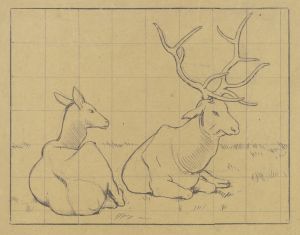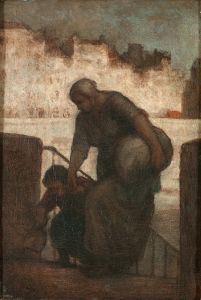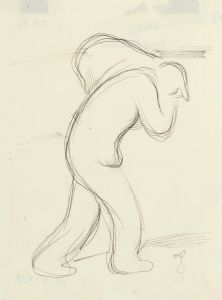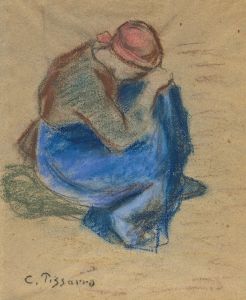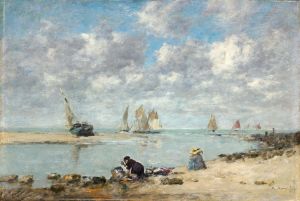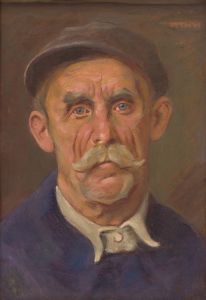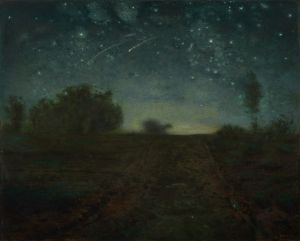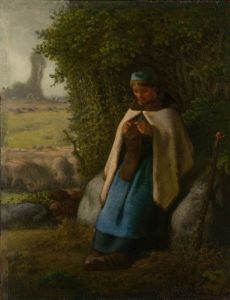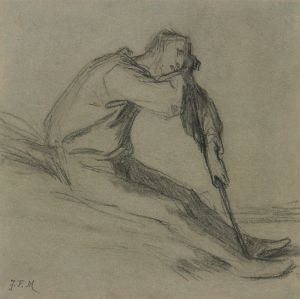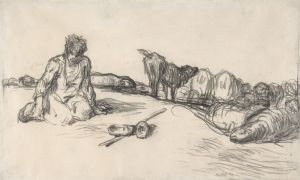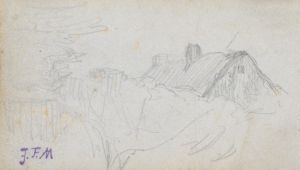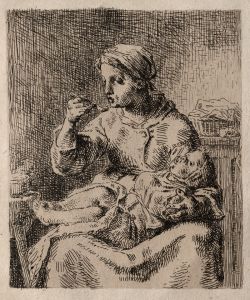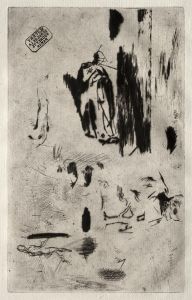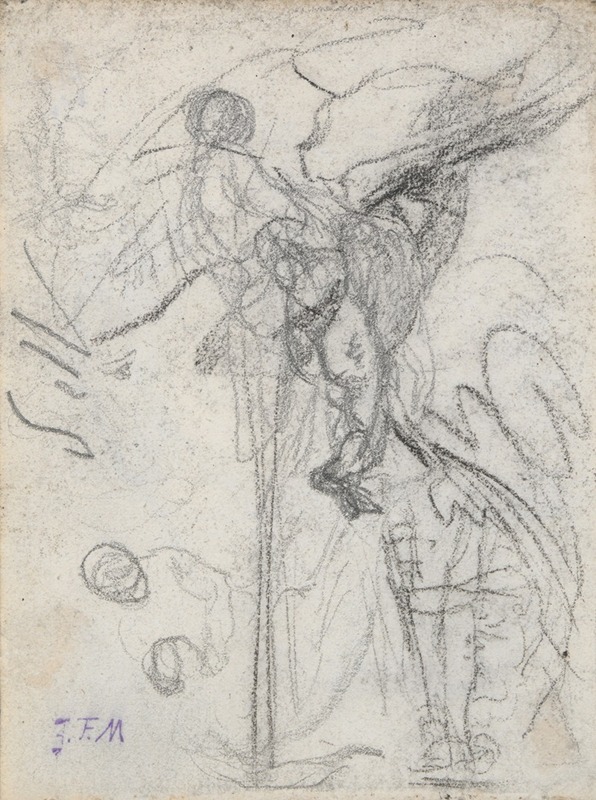
Hilly Landscape, Laundress, and Other Studies
A hand-painted replica of Jean-François Millet’s masterpiece Hilly Landscape, Laundress, and Other Studies, meticulously crafted by professional artists to capture the true essence of the original. Each piece is created with museum-quality canvas and rare mineral pigments, carefully painted by experienced artists with delicate brushstrokes and rich, layered colors to perfectly recreate the texture of the original artwork. Unlike machine-printed reproductions, this hand-painted version brings the painting to life, infused with the artist’s emotions and skill in every stroke. Whether for personal collection or home decoration, it instantly elevates the artistic atmosphere of any space.
Jean-François Millet, a prominent French painter and one of the founders of the Barbizon school, is renowned for his depictions of peasant life and rural landscapes. One of his lesser-known works, "Hilly Landscape, Laundress, and Other Studies," showcases his characteristic focus on the rural environment and the everyday lives of its inhabitants. This work is a testament to Millet's dedication to portraying the dignity and simplicity of rural life, a theme that permeates much of his oeuvre.
Millet was born in 1814 in the village of Gruchy, Normandy, into a family of farmers. His upbringing in the countryside profoundly influenced his artistic vision, as he often drew inspiration from the landscapes and people he observed in his youth. This connection to the land and its people is evident in "Hilly Landscape, Laundress, and Other Studies," where Millet captures the essence of rural life with sensitivity and authenticity.
The painting is a study, a type of preparatory work that artists often use to explore composition, form, and technique. In this piece, Millet employs a series of sketches to examine different elements of a rural scene. The central focus is a laundress, a common subject in Millet's work, reflecting the everyday labor and toil of rural women. The laundress is depicted in a natural setting, surrounded by a hilly landscape that emphasizes the connection between the figures and their environment.
Millet's technique in this study is characterized by his use of soft, muted colors and loose brushwork, which lend a sense of immediacy and intimacy to the scene. His ability to convey the texture of the landscape and the physicality of the figures is a hallmark of his style, demonstrating his skill in capturing the subtleties of light and shadow.
The Barbizon school, of which Millet was a key figure, was a movement that emerged in the mid-19th century in France. It was named after the village of Barbizon, near the Forest of Fontainebleau, where many artists gathered to paint en plein air, or outdoors. This approach marked a departure from the academic tradition of studio painting and emphasized a direct engagement with nature. Millet's work, including "Hilly Landscape, Laundress, and Other Studies," reflects this ethos, as he sought to depict the natural world with honesty and respect.
Millet's focus on rural subjects and his empathetic portrayal of peasant life were influential in the development of Realism, a movement that sought to represent everyday life without idealization. His work resonated with contemporary audiences and later artists, including Vincent van Gogh, who admired Millet's ability to capture the spirit of rural life.
"Hilly Landscape, Laundress, and Other Studies" is a valuable example of Millet's artistic process and his commitment to depicting the rural world. While it may not be as widely recognized as some of his other works, such as "The Gleaners" or "The Angelus," this study offers insight into Millet's approach to composition and his enduring interest in the themes of labor and nature.
In summary, Jean-François Millet's "Hilly Landscape, Laundress, and Other Studies" exemplifies his dedication to portraying the rural landscape and its inhabitants with authenticity and empathy. Through his use of color, composition, and subject matter, Millet captures the essence of rural life, contributing to the broader narrative of 19th-century art and the Realist movement.





